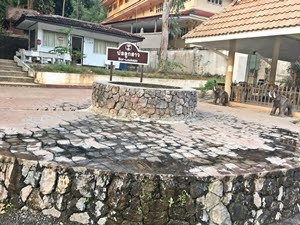Wat Maha That, Ayutthaya, Thailand
Wat Maha That is the royal temple that houses Buddha's relics. The temple is located on the city island in the central part of Ayutthay. It is situated in the east of The Royal Palace in Pratu Chai sub-district. Phra Na Korn Sri Ayutthaya district, Phra Na Korn Sri Ayutthay Province.
It is stated in the Royal Chronicles of Ayutthaya that the construction of Wat Maha That's Main Pagoda (Prang) was started by King Borommaracha I in 1374 and completed in King Ramesuan's reign. The Pagoda collapsed during King Songtham's reign and was renovated in 1633. after King Prasat Thong ascended to the throne.
Wat Mahathat was built in early Ayutthaya kingdom (early 20th century BE). Due to its supremely important position, the temple was the object of constant attention, receiving occasional additions and restorations at the time. for example, porticos were added to the main prang (Khmere - stylized stupa), in four cardinal directions around the closing years of Ayutthaya kingdom, supplemented by smaller, straggly stupas of varied size, interspersed among the bigger stupas.
The head of the sandstone buddha image
All that remains of this sandstone buddha image is part of its head, while the body has disappeared. The head is in the style of the Ayutthaya period. It lies beneath a bodhi tree beside the minor wihans.
Buddha's Head in Tree Roots
The head was once part of a sandstone Buddha image which fell off the main body onto the ground. It was gradully trapped into the roots of a constandtly growing Bodhi tree. The stone head has rather flat and wide facial structure with thick eyebrows and big eye lids, straight wide lip, and discernible lip edge, reflecting the art of Middle Ayutthaya Period, presumably around the mid of 1600s.
credit : sign board Wat Maha That























































